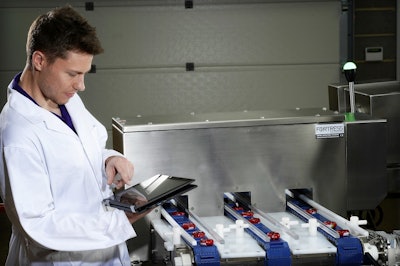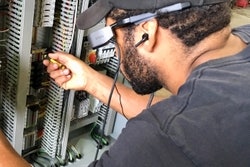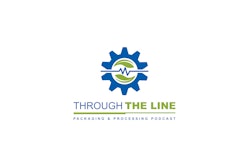
Fortress Technology’s multiaperture, multilane metal detector can inspect a larger quantity of products with increased sensitivity, while optimizing a plant’s efficiency and operations.
The multiaperture, multilane metal detector features a single metal detector mounted across multiple food processing and packaging lines with a single aperture dedicated to each line. Each aperture operates like a standalone metal detector. They are each sized as closely as possible to the product. As a result, the system is more sensitive to smaller metal particles and copes better with orientation and product effect. This helps prevent an entire row of good product from being rejected and wasted if a contaminated product is identified on one line.
A single control panel manages all lanes, streamlining operator access and enabling production managers to select and view data by individual lane, as well as analyze comparative lane data side by side. To increase production efficiency, each lane is programmed to run independently from each other. So, if one lane stops working or requires maintenance, the remaining continue to run as normal, therefore minimizing downtime.
Until now, food processors had limited options for multilane contaminant detection. They could either channel multiple lanes through a much larger single metal detector aperture. The clear drawback here is that the larger aperture size sacrifices valuable levels of sensitivity. This is because the larger aperture is looking for metal contaminants in multiple products and dealing with multiple signals, making it less sensitive.





















